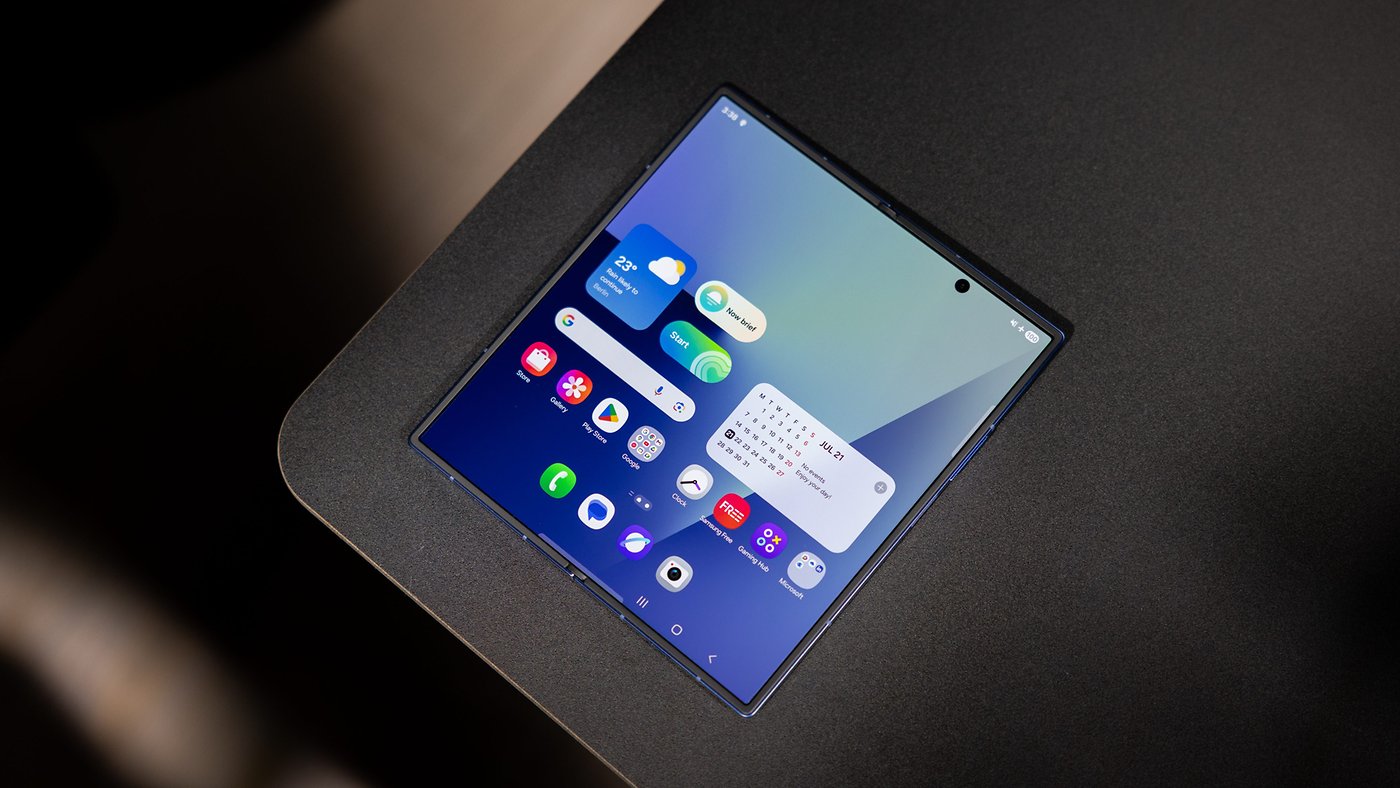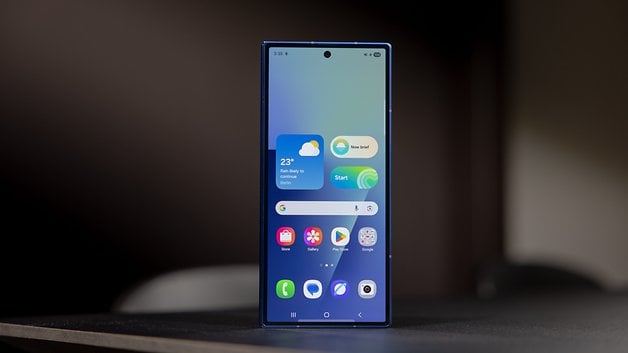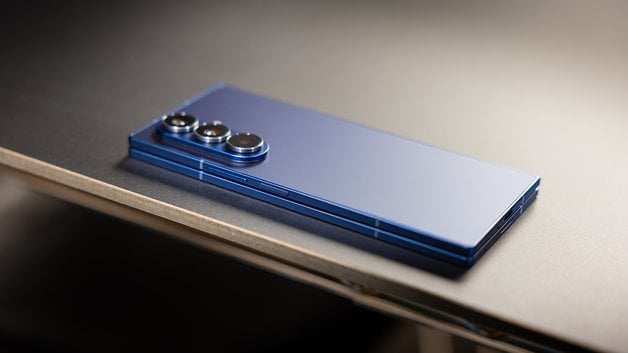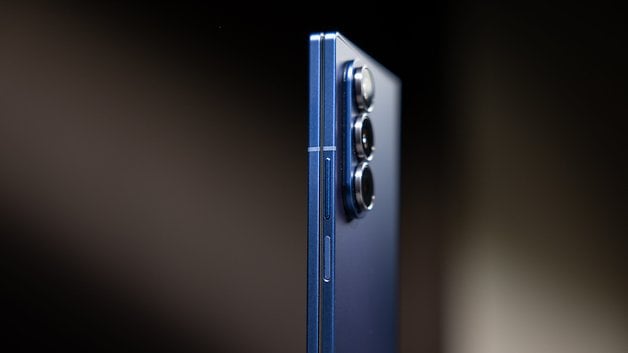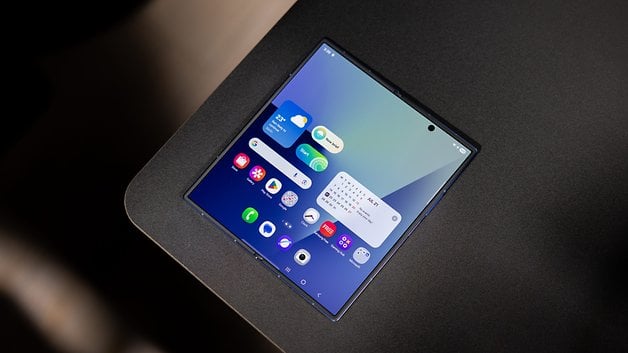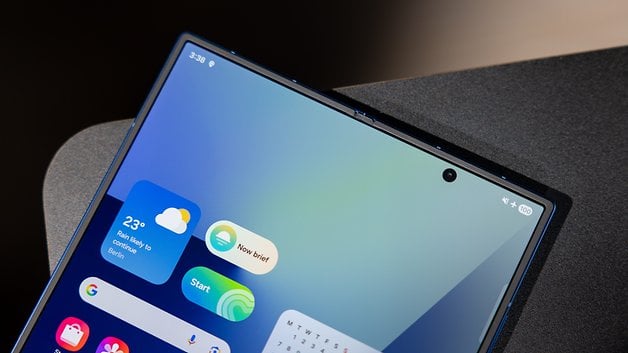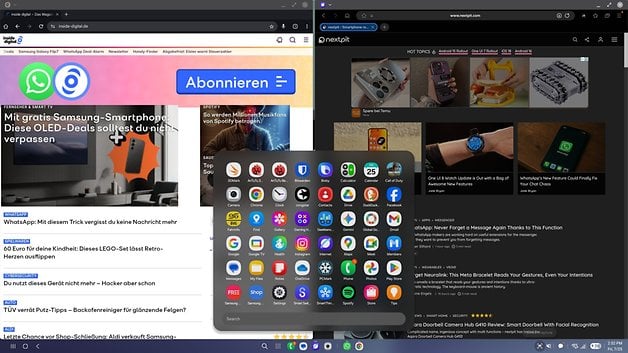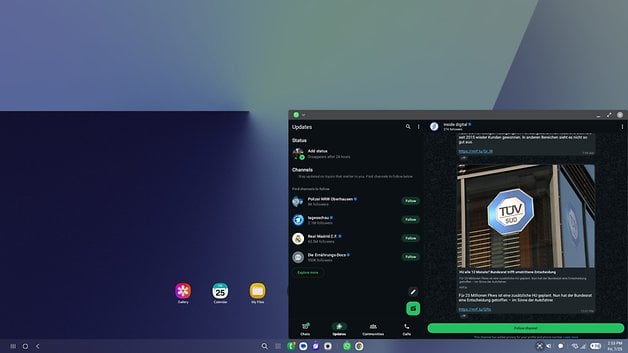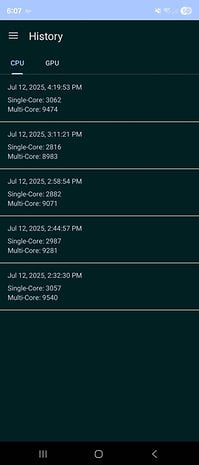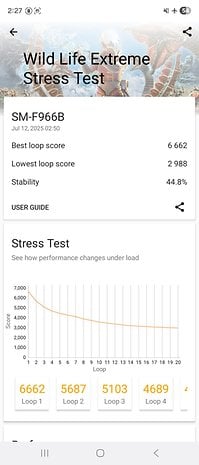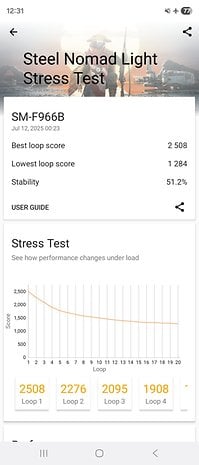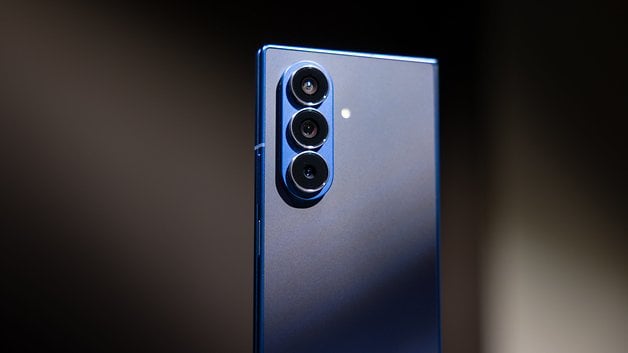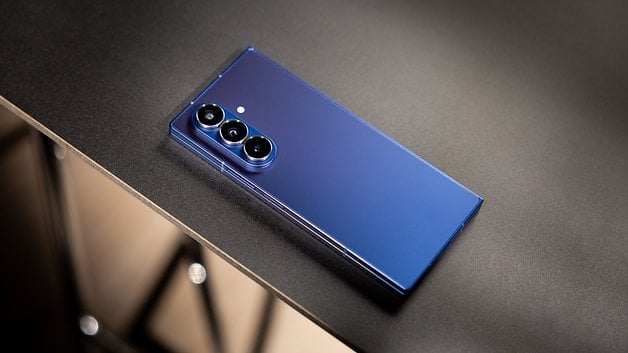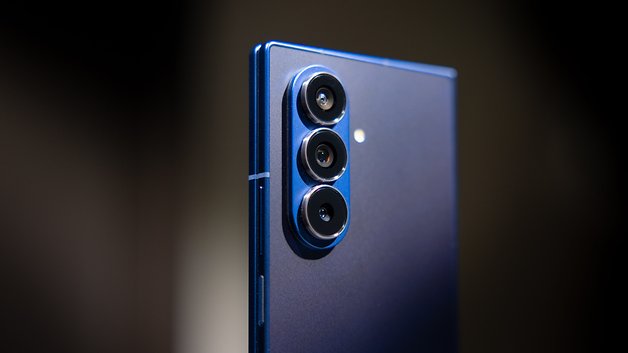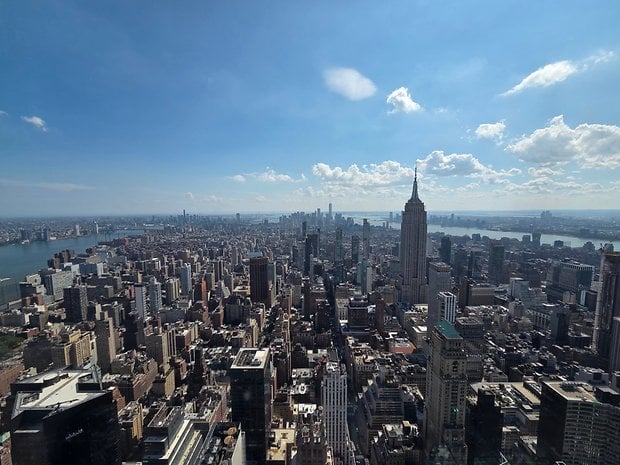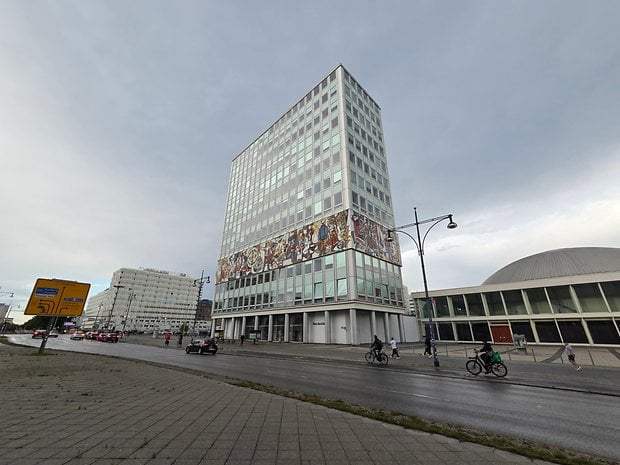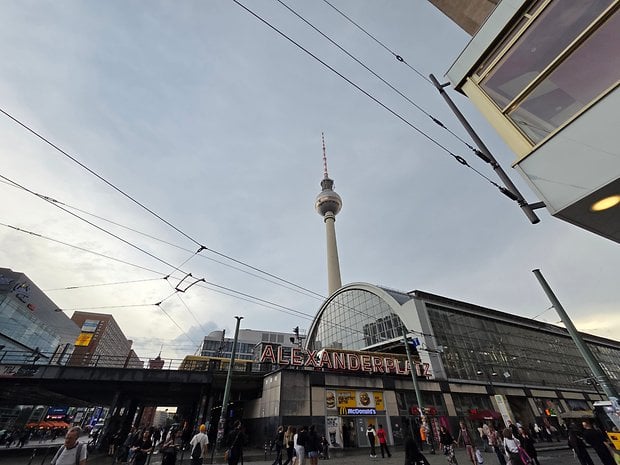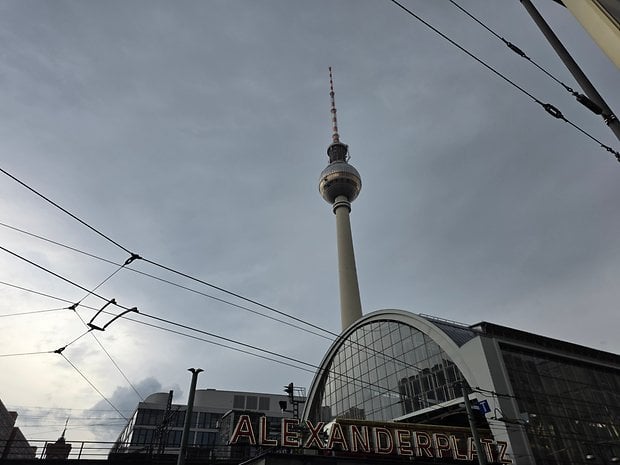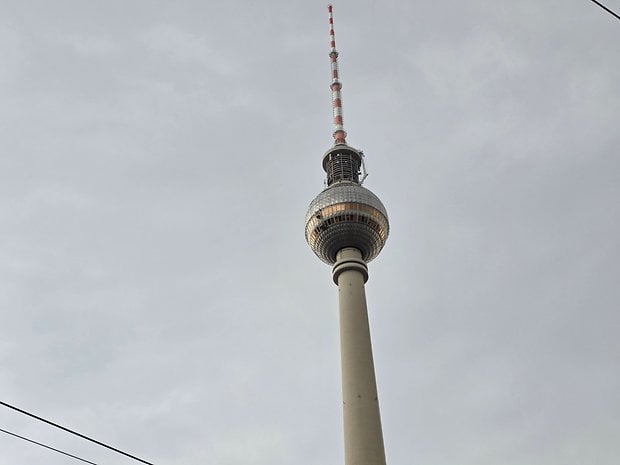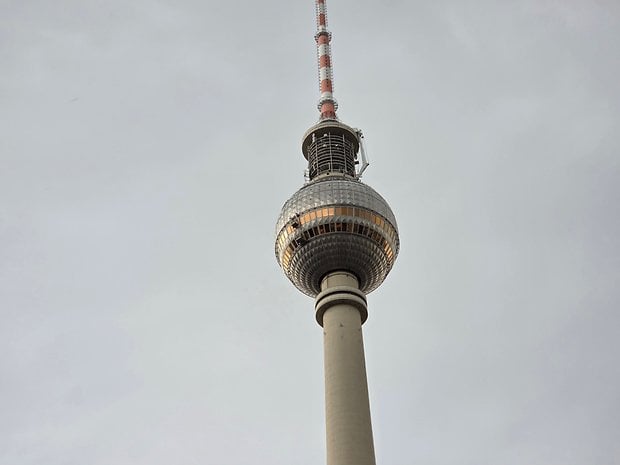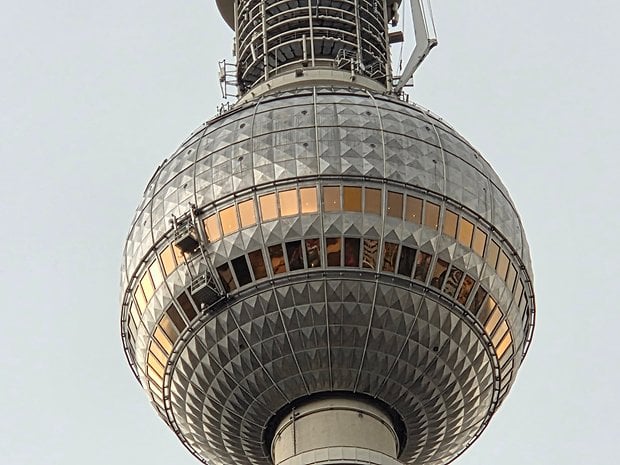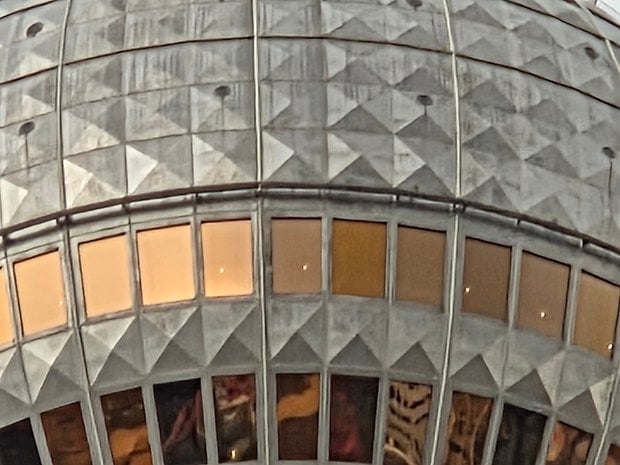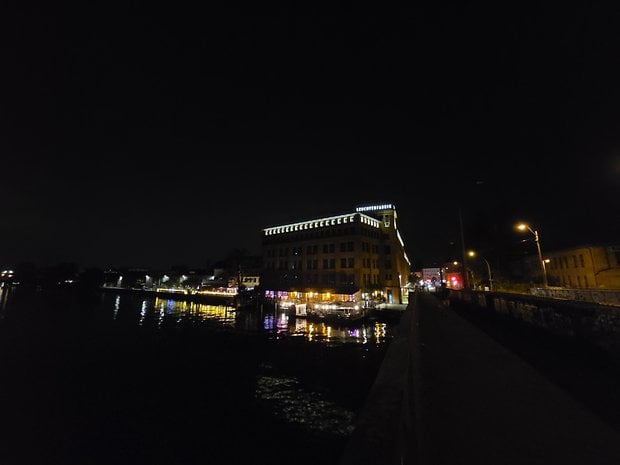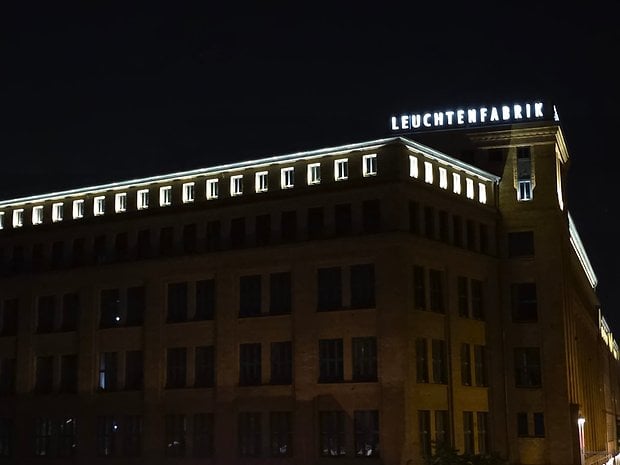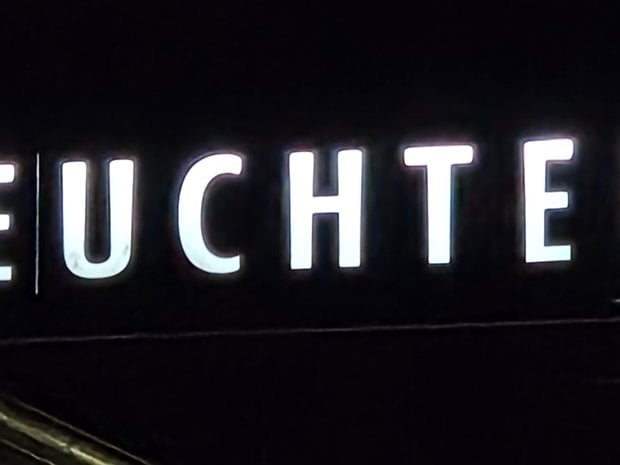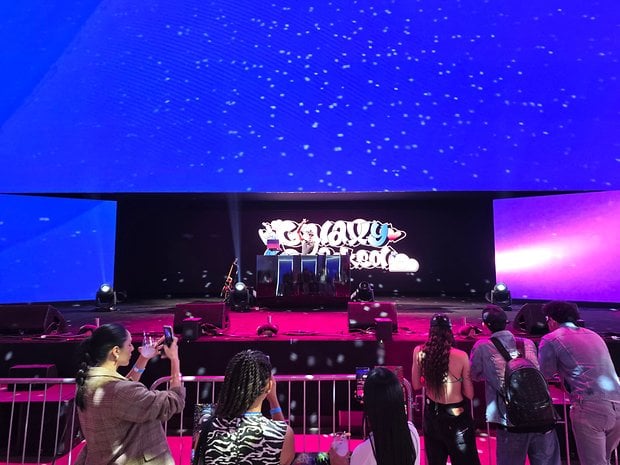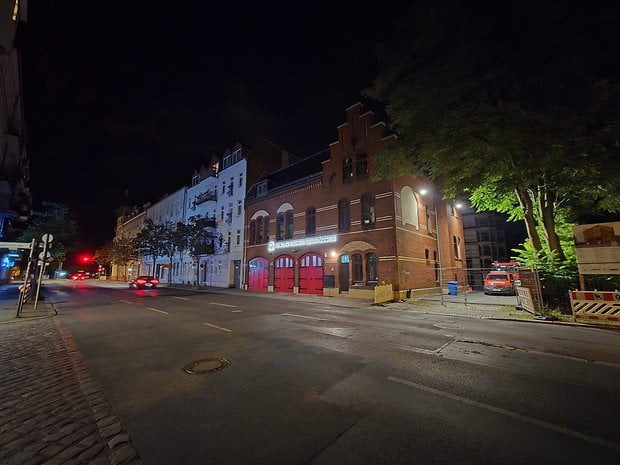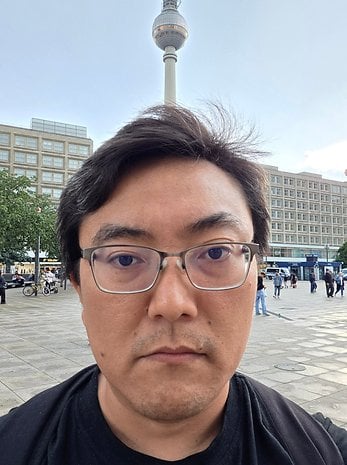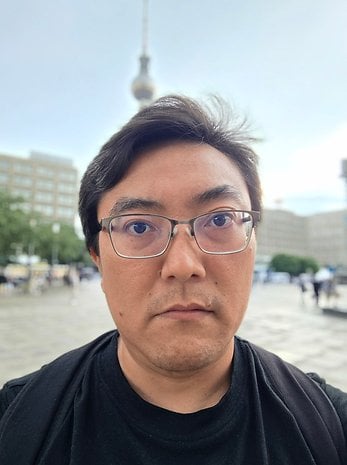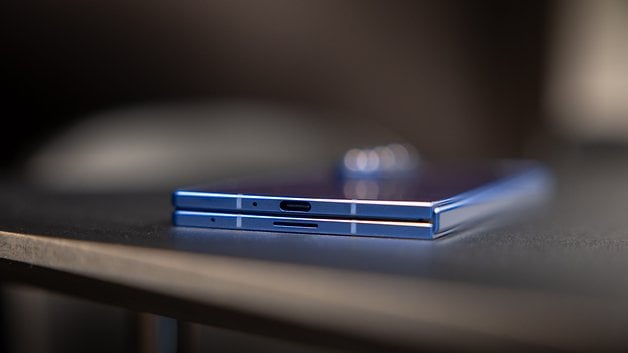Samsung Galaxy Z Fold 7 Review: Time to Upgrade
Samsung finally brought a comprehensive upgrade to its foldable line in 2025. The new Galaxy Z Fold 7 features a thin and light build, following minor changes in the last three generations. The new flagship model from the brand is very expensive, but does it offer an experience on par with its price? Let’s find out!
Last year’s Galaxy Fold 6 (review) was barely different from the Fold 5 or 4 we previously tested. But after an avalanche of interesting Chinese models such as the OnePlus Open, Honor Magic V3, and even Huawei, the Korean brand finally gave its foldable a significant update.
The highlight is its thin design, which makes the Fold 7, when closed, almost as thin as a regular smartphone. The weight is also close to a normal model, at 215 g (7.6 oz). On top of that, Samsung brought the usual upgrades in terms of processing, software, and even the camera.
Good
- Very thin and light
- Flagship performance
- Excellent displays
- The best software support
Bad
- Very expensive
- No S Pen support
- Still some camera trade-offs
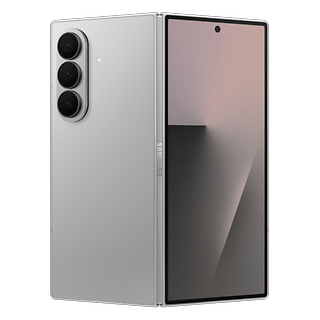

Samsung Galaxy Z Fold 7: All deals
Galaxy Z Fold 7: Thin is in
| Design and Build Quality | ||
|---|---|---|
| Displays |
|
|
| Dimensions and weight |
|
|
| Resistance |
|
|
Barely thicker than a standard Galaxy S25 Ultra (and at the same time lighter), the Fold 7 is impressively thin. Simply put, it is the thinnest foldable phone available on the market, tied with the Oppo Find N5, which is sold in only a few countries. Honor claims that title for its upcoming Magic V5, but real-world comparisons debunk that.
Samsung kept the premium feel on its most expensive phone, with metal sides and a hinge, plus good ergonomics. The Galaxy Z Fold 7 features a tall aspect ratio, being slightly narrower than a regular phone (similar to many Sony Xperia models).
Despite the thin profile, the Fold 7 is still IP48 rated for water-resistance and protection against larger particles (but not dust). And when it comes to colors, Samsung offers the phone in four options: Black, silver/gray, blue (as tested), and the online-exclusive mint.
One unexpected issue we found during testing is the fact that the thin profile makes it slightly awkward to open the phone. There is a small gap between the halves to pry them open, and the hinge is slightly stiff.
The displays feature the usual OLED characteristics: Vivid colors, good viewing angles, and smooth animations, the latter thanks to the 120 Hz refresh rate.
Brightness is not on par with regular smartphones, but we measured 1300 nits on the internal display and 1200 nits on the external screen. While far from record-breaking, both were still suitable for outdoor use.
Android 16 with One UI 8 on the Fold 7
| Software | |
|---|---|
| Operating system |
|
Samsung ships the Galaxy Z Fold 7 with the latest Android version, marking the debut of One UI 8 soon after the roll-out of the previous version. The phone is promised to receive seven years of both features and security updates, beating its rivals when it comes to software support.
Truth be told, One UI 8 is barely different from One UI 7, just like what happens in the base Android operating system. The user experience in general is similar to the one found in the previous Fold models, updated to One UI 7/Android 15, including multitasking options, the side panel, DeX mode, etc.
There is one big exception, however. The lack of S Pen support on the Galaxy Fold 7 also removes some handy features available in the previous foldable. This will disappoint a small but very vocal number of Samsung fans, some of whom have been loyal to the Galaxy Note series.
Another change that affects a limited, but loyal, set of users is the new DeX mode, which adopted Google’s native desktop mode feature in Android 16, with some Samsung-specific features. Despite the similar design at first glance, the new DeX lacks some interface features users may be used to, including a simplified taskbar and windowing system.
Galaxy Fold 7: Top Snapdragon Performance
| Performance | |
|---|---|
| Processor | |
| Memory |
|
| Connectivity |
|
On the performance front, Samsung equipped the Galaxy Fold 7 with the best-performing components available: The Snapdragon 8 Elite processor, paired with the latest and fastest RAM and storage standards. The result is fluid performance in all scenarios, except for the few features that rely on server-side processing, such as a few AI tools.
| Galaxy Z Fold 7 (Snapdragon 8 Elite) |
Galaxy S25 Ultra (Snapdragon 8 Elite) |
OnePlus 13 (Snapdragon 8 Elite) |
Xiaomi 14T Pro (Dimensity 9300) |
|
|---|---|---|---|---|
| AnTuTu | 2,047,763 | 2,341,216 | 2,695,676 | 2,013,101 |
| 3DMark Wild Life Extreme Stress Test |
Best loop: 6662 Worst loop: 2988 Stability: 44.8% |
Best loop: 6986 Worst loop: 3253 Stability: 46.6% |
Best loop: 8751 Worst loop: 4410 Stability: 50.4% |
Best loop: 2983 Worst loop: 2633 Stability: 88.3% |
| 3DMark Steel Nomad Light Stress Test |
Best loop: 2508 Worst loop: 1284 Stability: 51.2% |
Best loop: 2581 Worst loop: 1363 Stability: 52.8% |
– | Best loop: 1132 Worst loop: 1086 Stability: 95.4% |
| Geekbench 6 | Single: 2960 Multi: 9268 |
Single: 3187 Multi: 9947 |
Single: 3125 Multi: 9697 |
Single: 2188 Multi: 7158 |
That said, while performance in daily usage was flawless, synthetic benchmark tests showed that the Fold 7 performed slightly worse than the S25 Ultra. Testing the foldable device in its open state improves cooling, which results in less thermal throttling – when the phone reduces its processing speeds to avoid overheating – but not enough to match the performance of a standard smartphone with the same chip.
When it comes to gaming, the Galaxy Z Fold 7 should have no problems running all the latest modern games. However, longer play sessions may force the phone to reduce performance to avoid overheating. We didn’t notice the phone getting too hot to the touch while playing games, but there is always the risk of thermal throttling, like in the benchmarks.
Fold 7 Cameras: Not Quite “Ultra”
| Camera | |
|---|---|
| Main Camera | |
| Ultra-Wide Camera | |
| Tele Camera |
|
| Selfie Camera |
|
| Max. Video Resolution |
|
Samsung suggested in the teasers before the Galaxy Z Fold 7 launch to prepare for “Ultra”, hinting that the camera would not have the same trade-offs as past foldables. And while there is a big improvement in the main sensor, the rest of the camera system is not quite worthy of the Ultra name.
Good news first: The main camera uses the same 200-megapixel sensor as in the Galaxy S25 Ultra. It provides sharp, detailed images, using pixel binning to save files with 12 megapixels. The technology combines the light information from 16 “sensor pixels” into 1 “file pixel”.
Samsung also offers the option to save files in the native sensor resolution or in 50-megapixel (with 4 pixel binning), which can be better if you want large prints of your photos. For more advanced camera controls, there is the Expert RAW app that needs a separate installation.
The ultrawide camera was not as sharp as the main one, but still delivered good photos, with similar colors, but with some soft edges. The telephoto camera offers a 3x optical zoom, providing good details and colors, and clearly outperforms the 2x zoom (which simply crops the center part of the main camera’s capture).
What is not so “Ultra” on the Fold 7, however, is the lack of a longer telephoto lens, usually found on flagship smartphones and even a few foldable rivals from China. While we miss the option of taking 10x optical zoom shots, we understand that it would require an even bigger camera bump, as those Chinese alternatives have shown, and it is a trade-off we can accept.
Results at night were on par with most flagship cameras on the market, but not quite the best. Shots from the main camera performed better, due to the bigger sensor and better optics, but the photos from the telephoto and ultrawide were usually dark and soft.
Night mode really helps the three cameras return more pleasing results, solving the darkness issue on the auxiliary cameras, but not quite fixing the softness problem. Night mode on the main camera, however, worked flawlessly, with excellent colors and details, and kept light sources under control.
Selfies were good as well, with realistic skin tones and textures in the default settings with both the external (or cover) and internal cameras. Portrait mode had some issues with some loose hair, but it was an extreme scenario that would trip most phones anyway.
Like other foldables, the Galaxy Z Fold 7 offers the option to use the more capable main cameras for selfies, but framing shots while looking at the screen was a challenge. The resulting shots had a better level of detail and warmer (more pleasing) colors, and the ultrawide camera can include a lot more people in the photo.
Good Enough Battery Life
| Battery | |
|---|---|
| Battery Capacity | |
| Wired Charging Speed | |
| Wireless Charging Speed |
Despite the thinner design, the Galaxy Z Fold 7 has the same battery capacity as its predecessor at 4400 mAh. It may seem low compared to the Chinese rivals adopting SiC (Silicon-Carbon) batteries, but it is not surprising to see Samsung being conservative (after all, the Galaxy Note 7 is still banned on flights).
In practice, battery life was fine for a regular day of usage, as long as you don’t open the phone very often. Taking photos, streaming music, and using navigation sparsely, the battery was good enough for an entire day. However, as soon as we started watching videos on the larger screen, it became clear that an afternoon charge would be necessary.
| Charging | Galaxy Z Fold 7 (4400 mAh | with 45 W PD charger) |
Galaxy S25 Ultra (5000 mAh | Samsung 45 W PD) |
Pixel 9 Pro XL (5060 mAh | 140 W USB-PD) |
|---|---|---|---|
| 10 minutes | |||
| 30 minutes | |||
| 1 hour | |||
| Full charge | |||
| PC Mark Battery Test |
We couldn’t get the PCMark battery test to run reliably on the Galaxy Z Fold 7, but we timed how long it took to charge the phone. Using a Samsung 45W charger compatible with the Fold’s 25W limit, it took 82 minutes for a full charge, with half an hour reaching a 55% charge. Charging is far from being the fastest around, but it was good enough considering the thin design and thermal worries.
Is the Samsung Galaxy Z Fold 7 a Good Buy?
If you are in the market for a foldable phone and have the budget, yes. Especially if you were underwhelmed by previous generations of the Fold line. The Galaxy Z Fold 7 is a worthy upgrade to anyone using an older Fold, with the caveat of lacking S Pen support.
The Fold 7 is also an interesting option to anyone with a regular smartphone who is curious about foldables, but never liked the size and weight trade-offs of foldables. The price, however, is still high and might be a problem for those.
The Galaxy Z Fold 7 is the culmination of a long, difficult road taken by Samsung when it invested in foldables, and can almost perfectly replace a flagship model with only a small compromise in camera versatility. However, the options offered by the big screen more than make up for that, and it is still an impressive feat of engineering.

Samsung Galaxy Z Fold 7
To device database
